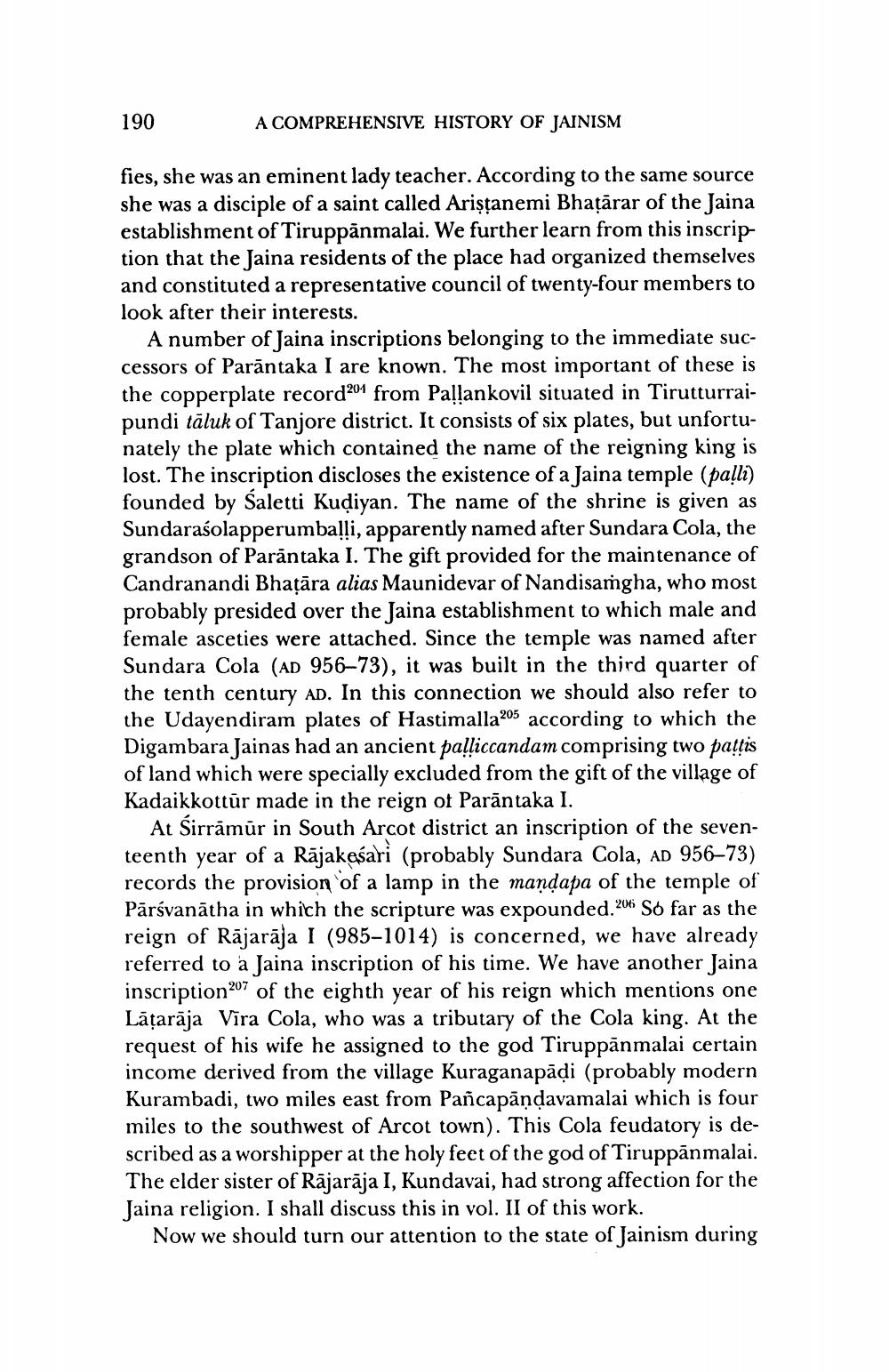________________
190
A COMPREHENSIVE HISTORY OF JAINISM
fies, she was an eminent lady teacher. According to the same source she was a disciple of a saint called Aristanemi Bhatarar of the Jaina establishment of Tiruppanmalai. We further learn from this inscription that the Jaina residents of the place had organized themselves and constituted a representative council of twenty-four members to look after their interests.
A number of Jaina inscriptions belonging to the immediate successors of Parāntaka I are known. The most important of these is the copperplate record201 from Pallankovil situated in Tirutturraipundi tāluk of Tanjore district. It consists of six plates, but unfortunately the plate which contained the name of the reigning king is lost. The inscription discloses the existence of a Jaina temple (palli) founded by Saletti Kudiyan. The name of the shrine is given as Sundarasolapperumballi, apparently named after Sundara Cola, the grandson of Parāntaka I. The gift provided for the maintenance of Candranandi Bhațāra alias Maunidevar of Nandisamgha, who most probably presided over the Jaina establishment to which male and female asceties were attached. Since the temple was named after Sundara Cola (AD 956-73), it was built in the third quarter of the tenth century AD. In this connection we should also refer to the Udayendiram plates of Hastimalla205 according to which the Digambara Jainas had an ancient palliccandam comprising two pattis of land which were specially excluded from the gift of the village of Kadaikkottur made in the reign of Parāntaka I.
At Sirrāmur in South Arcot district an inscription of the seventeenth year of a Rājakaśari (probably Sundara Cola, AD 956–73) records the provision of a lamp in the mandapa of the temple of Pārsvanātha in which the scripture was expounded. 206 So far as the reign of Rājarāja I (985-1014) is concerned, we have already referred to a Jaina inscription of his time. We have another Jaina inscription 207 of the eighth year of his reign which mentions one Lățarāja Vīra Cola, who was a tributary of the Cola king. At the request of his wife he assigned to the god Tiruppanmalai certain income derived from the village Kuraganapadi (probably modern Kurambadi, two miles east from Pañcapāņdavamalai which is four miles to the southwest of Arcot town). This Cola feudatory is described as a worshipper at the holy feet of the god of Tiruppanmalai. The elder sister of Rājarāja I, Kundavai, had strong affection for the Jaina religion. I shall discuss this in vol. II of this work.
Now we should turn our attention to the state of Jainism during




